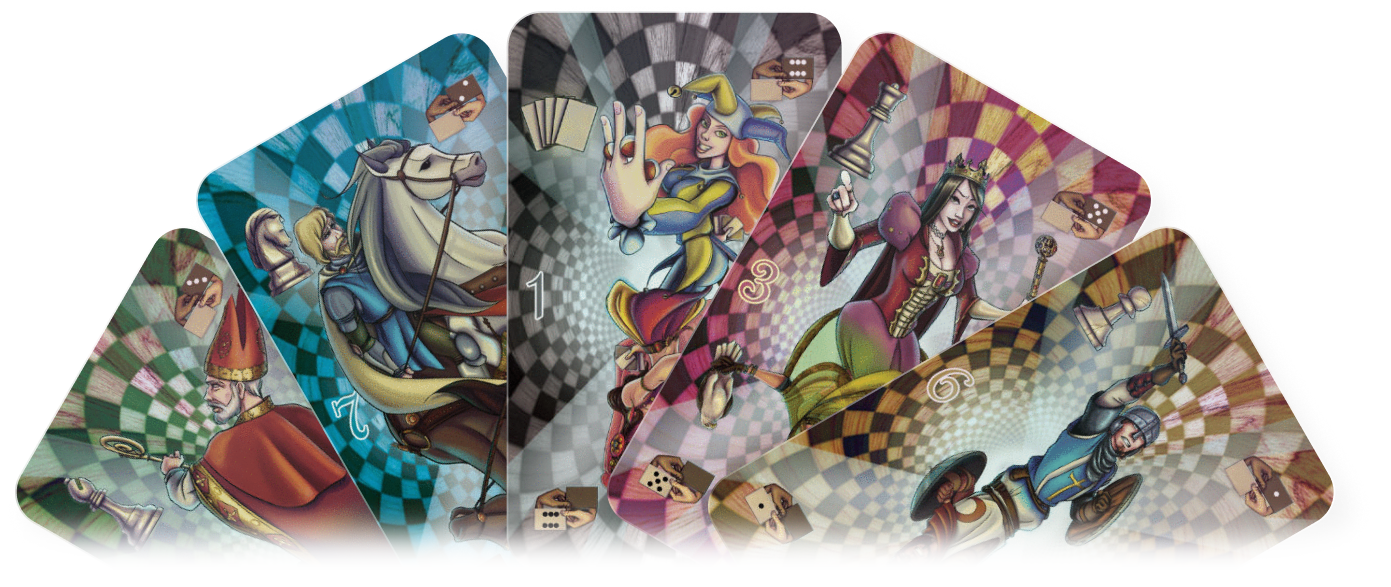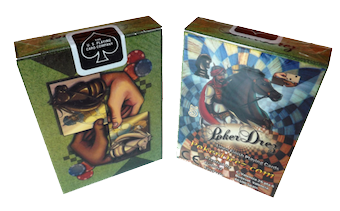SokuDrez
SokuDrez is inspired by the traditional Sudoku where the numbers must not be repeated in rows or columns.

Components
A full deck of Pokerdrez cards will be used.
The two neutral cards will not be involved in this game.
After shuffling properly, the cards will be placed face up on a table in 6 rows of 9 columns each. In this way, all the cards will be visible to the player.
The objective of the game is to arrange the cards so that they meet the following two conditions:
- In each of the rows, there is a card of each of the numbers from 1 to 9, or in other words, in each row there are cards of all the nine different available colors, without repetition of any of them.
- In each column, the six existing figures appear: pawn, knight, bishop, rook, queen, joker, that is, in no column can any figure be repeated.
To achieve this, you can exchange the position of any two cards. This will constitute a move. You should try to make the cards on the table meet the two conditions above in the fewest possible moves.

Strategy
It is recommended to start organizing by columns.
In each column, look for the repeated figures and exchange one of them for another figure, missing in that column, and that is repeated in another column where, probably, the figure from the first column is also missing.
Example: If in the first column we have the pawn figure repeated, but we lack the knight, we can look for another column, for example the third, where the knight is repeated, and probably a pawn is missing, to exchange one of the pawns from the first column, for one of the two knights from the third column.
If during this column exchange, we also manage to start organizing the numbers in the rows, then we will be achieving several objectives with a single move.
Example: If of the two pawns we had in the first column one has the number 1 (black color) while of the knights of the third column with which we are going to exchange one has a 7 (cyan) and in the row where the cyan knight is missing the number 1 and in the row where the black pawn is missing the number 7, then exchanging that pawn (1:black) and that knight (7:Cyan) will be organizing at the same time two columns and two rows (although later more moves may have to be made within them to be completely organized.)
Once all the columns are organized with different figures in each of them, start checking and organizing the rows.
Just like in the case of the columns, but now with the numbers, look for the repeated numbers in a row and exchange them for cards in another row with numbers that may be missing in the original row.
In the organization of the rows, it is important to take into account that the card with which you exchange from another row is exactly the same figure as the original. In this way, the organization of figures that we had achieved for the columns will be maintained.

Multi-player variant
Each move can be counted in points corresponding to the amount of “improvements in the organization” that the move achieves.
Likewise, up to 8 points can be awarded to the move.
- One point if the figure of the first card was repeated in its original column
- An extra point if the figure of the first card did not exist in the destination column
- An extra point if the number of the first card was repeated in its original row
- An extra point if the number of the first card did not exist in the destination row
- An extra point if the figure of the second card was repeated in its original column
- An extra point if the figure of the second card did not exist in the destination column
- An extra point if the number of the second card was repeated in its original row
- An extra point if the number of the second card did not exist in the destination row
After the first turn of the first player, the players will enjoy double turns each (to compensate for the advantage of the first).
At the end of the game, the points obtained by each of them will be added up.
The last move, after which all the cards are organized, will only be counted if it is the first of the double turn of that player. (In this way both players have had the same number of turns.)
The player with the highest score will win the game.

